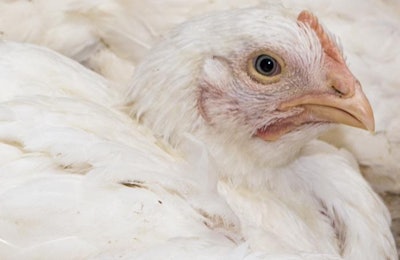
Poultry health status in Latin America has been an omnipresent issue. The poultry industry in this region, however, is not that different from other poultry industries in the world, because it is facing the same disease risks.
Dr. Rafael Fernández said during his keynote presentation at the International Production & Processing Expo (IPPE) Marketplace's Latin American Poultry Summit that occurrence of new diseases in commercial poultry and re-occurrence of pathological conditions that were already controlled, are more frequently reported in the region.
A Latin American wide well-known consultant, Dr. Rafael Fernández made an analysis of the situation. For instance, he said that immunosuppressing diseases such as Marek’s or Gumboro pave the way to other diseases, impacting production. Respiratory disease such as avian influenza, laryngotracheitis, Newcastle disease or infectious bronchitis are having an economic impact in the region, as well.
There are other diseases, such as egg drop syndrome (EDS-76), avian reovirus and runting stunting syndrome (RSS) that have been reported lately. But digestive diseases, such as salmonella infections, inclusion body hepatitis, necrotic enteritis or coccidiosis have significantly affected the Latin American poultry industry.
Black head disease and Campylobacter are re-occurring, and parasitic hepatic diseases cases were also reported last year in breeders and broilers in different countries in the region.
He made emphasis on the importance of having good diagnostic labs and encourage assistants to have these services available. Good facilities, that are certified and well equipped are very much needed, still today. Timely diagnosis is necessary to establish a suited vaccination schedule, adapted to the local infectious conditions.
He also mentioned that coccidiosis cases, both E. acervulina or E. maxima, and necrotic enteritis are occurring because biosecurity and health are not good enough. "There is not enough downtime between flocks or good cleaning, as well as pressure of having non-antibiotic production", he added.
Finally, he said that it is very important to establish a dynamic epidemiological program in each country, for disease prevention, and not after problems occur.
Animal welfare research
The U.S. Poultry & Egg Association (USPOULTRY) sponsors research work in Latin America, together with ALA (the Latin American Poultry Producers Association). So, the Latin American Poultry Summit was a very good opportunity to present the results of these two projects.
The two research projects involved animal welfare. It was commended the fact that results and recommendations emerge from the region itself, as opposed to recommendations developed elsewhere.
Dr. Rebeca Zamora, of the University of Costa Rica presented her research work on the development and validation of a broiler welfare program under commercial conditions. After thorough evaluations, she concluded that indicators based on both, resources and the animal, are required. The first ones resolve precise problems in real time, whereas the second ones show cumulative conditions of the animal. However, the objective of the company will ultimately define the protocol to follow. Also, she concluded that more research is needed to develop indicators for the animal-human being relationship.
Then, Marconi Italo da Silva, Ph.D. candidate of the University of São Paulo, presented his results on broiler welfare and productivity in enriched environments. He said that his proposal is feasible, because production cost is not highly increased, and actually adds value to the product. Additionally, having more relaxed birds with less metabolic disorders will result in less carcass condemnations at the processing plant.
















